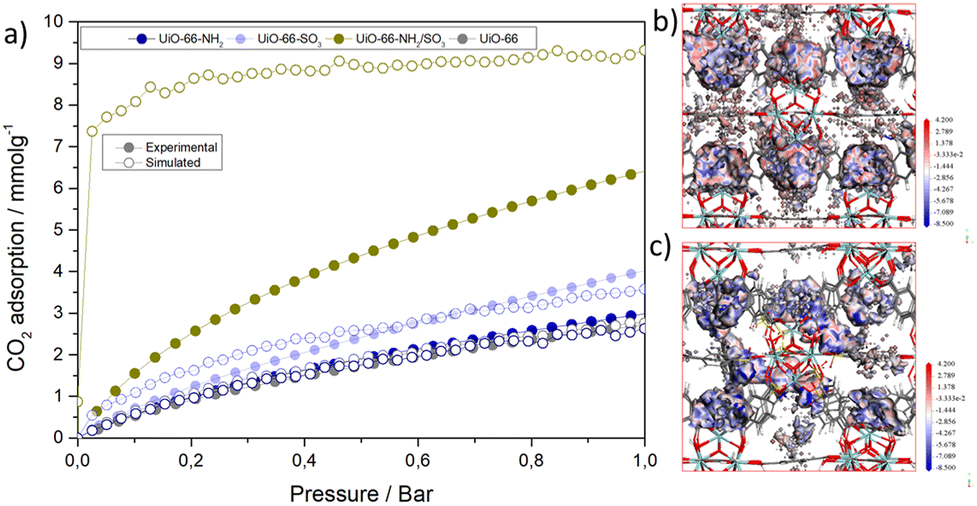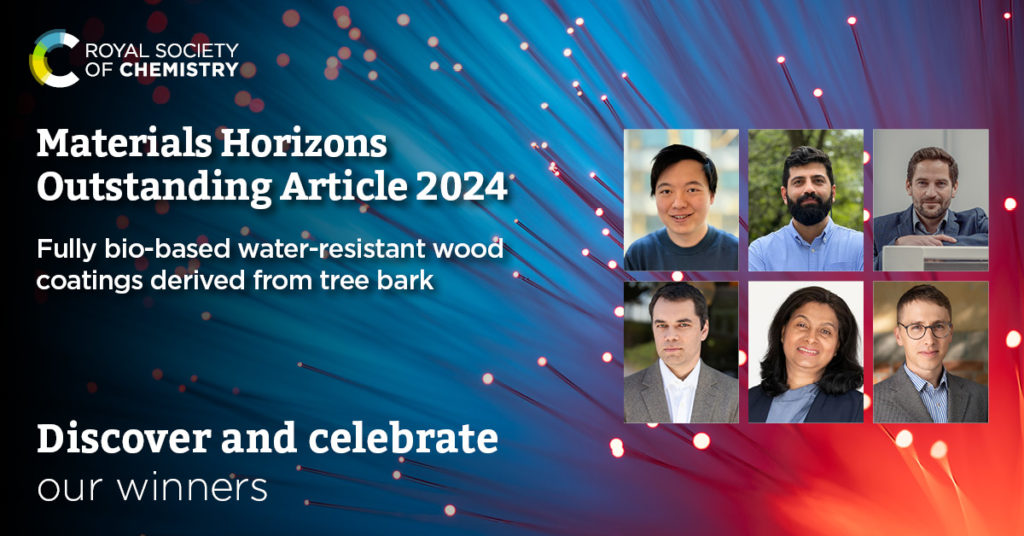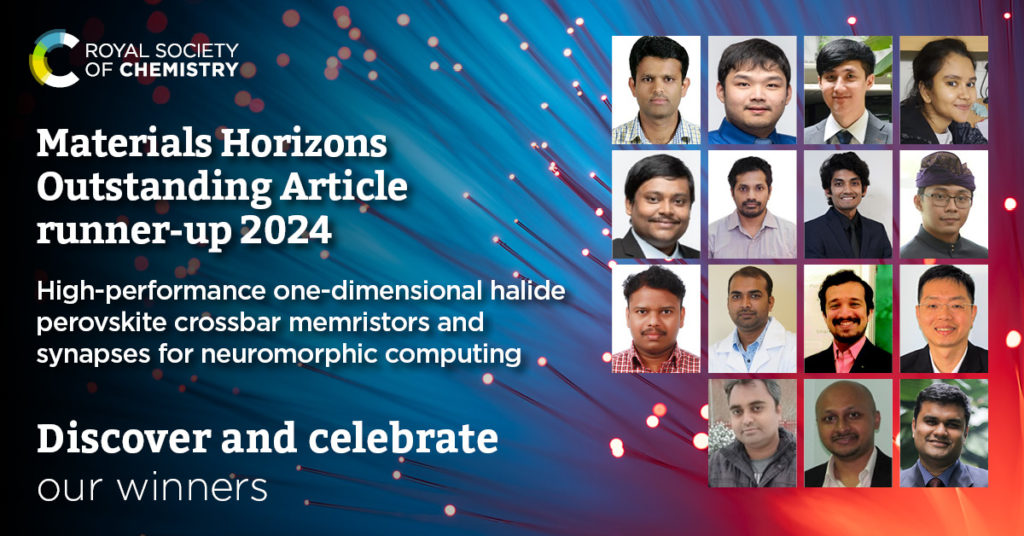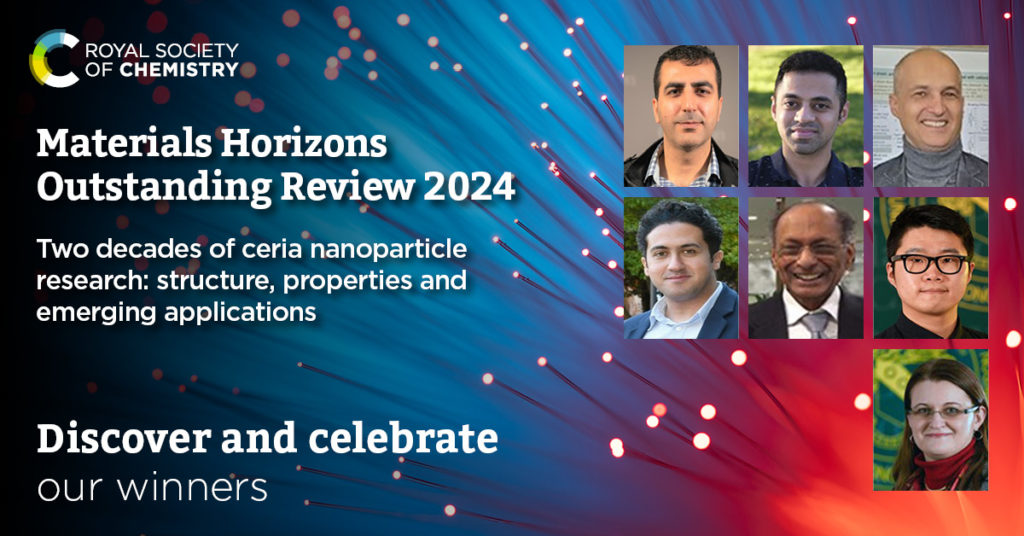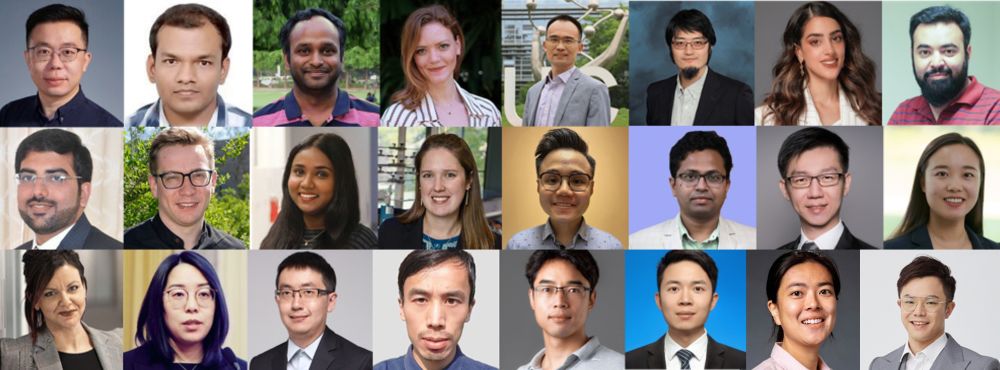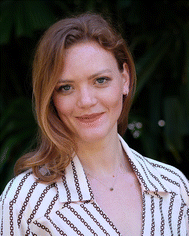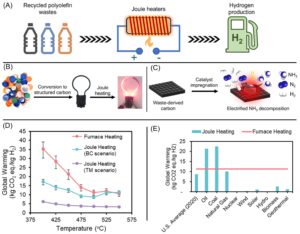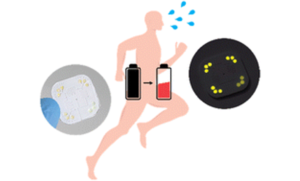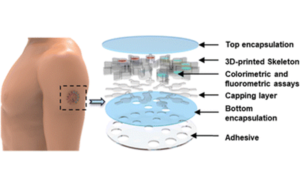Nanocatalysis
Open call for papers
We are pleased to announce an open call for papers to a themed collection across Nanoscale Horizons and Materials Horizons, published by the Royal Society of Chemistry.
This collection is being Guest Edited by Marcella Lusardi (Princeton University, USA), Tianyi Ma (RMIT University, Australia), Wee-Jun Ong (Xiamen University Malaysia), Vivek Polshettiwar (Tata Institute of Fundamental Research (TIFR), India), Jennifer Strunk (Technical University of Munich, Germany) and Huabin Zhang (KAUST, Saudi Arabia).

Nanocatalysis represents a transformative frontier in nanoscience and nanotechnology, profoundly advancing the field of catalysis. The integration of nanostructures enables precise control over the dispersion of active sites and the optimization of diffusion pathways for reaction species. Tailored control of particle size, crystal facets, and the hierarchical assembly of nanoparticles has unlocked unprecedented catalytic activity and selectivity, driving innovation in catalyst design.
Moreover, the tunable thermal, piezoelectric, photo- and electrochemical properties of nanomaterials have expanded their utility, facilitating groundbreaking applications in energy and environmental domains. These include solar water splitting, C1 conversion processes, H2O2 production, plastic valorization and reforming, nitrogen fixation, nitrate reduction, methane conversion, and organic chemical synthesis—critical challenges of global significance. In the context of depleting fossil fuels, rising atmospheric CO2 levels, and the urgent need for sustainable clean solutions, nanocatalysis has emerged as a pivotal driver in chemical synthesis, environmental remediation, and clean energy technologies.
Open for submissions until 16 July 2025
This special-themed collection aims to provide a comprehensive platform for showcasing the latest breakthroughs and emerging trends in catalysis, with a focus on the interface at materials and nanoscience. The scope of the collection is intentionally broad, including but not limited to:
- Design, synthesis, and characterization of nanostructured catalysts
- Mechanistic insights through computational modelling
- Innovative catalyst synthesis methods
- Innovative applications of (nano)catalysts
- Energy catalysis
- High quantum efficiency photocatalysis, photothermal catalysis, photoelectrocatalysis, electrocatalysis, plasma catalysis, thermal catalysis, piezoelectric photocatalysis
- Catalyst discovery via machine learning and artificial intelligence methods
- Active site or structure elucidation under excited state conditions/in situ operando techniques
Meet the Guest Editors
 |
Marcella Lusardi (Princeton University, USA)
Marcella Lusardi joined Princeton University as an Assistant Professor in Chemical and Biological Engineering and the Materials Institute in July 2022. Prior to that, she worked on designing next generation diesel emissions catalysts as a research scientist at BASF (2021-2022), and conducted postdoctoral research in Prof. Mark Davis’s group at Caltech (2018-2021). Her group’s research centers on molecular-scale materials design to address pressing challenges in sustainable chemistry, with a primary focus in catalytic and adsorption applications.
|
 |
Tianyi Ma (RMIT University, Australia)
Tianyi Ma is a RMIT University Distinguished Professor, an Australian Research Council Future Fellow, Fellow of Royal Society of Chemistry, and Clarivate’s Global Highly Cited Researcher. He is Director of ARC Industrial Transformation Hub for Intelligent Energy Efficiency in Future Protected Cropping (E2Crop), and Research Director of Centre for Atomaterials and Nanomanufacturing (CAN). His international standing is evidenced by >400 publications in top-tier journals with an H-index of 95 and >40,000 citations. His ground-breaking research has been acknowledged by internationally recognised experts and authorities via 2024 Prime Minister’s Prize for Science – the Malcolm McIntosh Prize for Physical Scientist of the Year, Australian Academy of Science’s Le Févre Medal, Young Tall Poppy Science Award, ARC Discovery Early Career Researcher Award, and Horizon Prize of Royal Society of Chemistry. |
 |
Wee-Jun Ong (Xiamen University Malaysia)
Wee-Jun Ong received his B.Eng. and Ph.D. in chemical engineering from Monash University. He is a Professor and Assistant Dean in School of Energy and Chemical Engineering at Xiamen University Malaysia. Starting from 2021, he serves as the Director of Center of Excellence for NaNo Energy & Catalysis Technology (CONNECT). Since September 2024, I have been an Adjunct Professor of College of Engineering at Korea University. Previously, he was a scientist at Agency for Science, Technology and Research (A*STAR), Singapore. In 2019, he was a visiting scientist at Technische Universität Dresden and a visiting professor at Lawrence Berkeley National Laboratory. His research interests include nanomaterials for photo(electro)catalytic and electrochemical H2O splitting, CO2 reduction, alcohol oxidation, H2O2 production, plastic reforming, and N2 fixation as well as H2 storage. |
|

|
Vivek Polshettiwar (Tata Institute of Fundamental Research (TIFR), India)
Prof. Vivek Polshettiwar research interests are within the domain of advanced nanomaterials and nanocatalysis for harvesting solar energy and the transformation of carbon dioxide into value-added chemicals and fuels. The work of his group in the nanocatalysis realms of “Black Gold” and “Defects” chemistry represents a quintessential example of how fundamental science can drive innovation in applied research. His group’s detailed exploration of plasmonic photocatalysis and defect engineering offers new perspectives on material design, catalysis, and sustainability, paving the way for future research that continues to explore the vast potential of nanomaterials in solving some of the world’s most pressing environmental and energy challenges. He has published nearly 150 articles and also filed 12 national and international patent/patent applications. |
|

|
Jennifer Strunk (Technical University of Munich, Germany)
Prof. Strunk conducts research in the fields of heterogeneous catalysis and photocatalysis. The aim is to activate small, stable molecules, such as the recycling of the greenhouse gas carbon dioxide into chemical production and the activation of nitrogen for the synthesis of basic chemicals. The focus is particularly on understanding the elementary physical and chemical steps driven by light and heat in order to enable scaling up from the laboratory to industry. |
|

|
Huabin Zhang (KAUST, Saudi Arabia)
Dr. Huabin Zhang obtained his Ph.D. from the Chinese Academy of Sciences. After graduation, he remained at the university as an assistant professor before moving to Japan to conduct postdoctoral research at the National Institute for Materials Science (NIMS) in Tsukuba. In 2017, he joined Nanyang Technological University as a research fellow. Since 2021, he has been an assistant professor at King Abdullah University of Science and Technology (KAUST). Dr. Zhang’s research primarily focuses on the development of single-atom catalysts for photo- and electrocatalysis, including water splitting and CO₂ reduction. Dr. Zhang has been recognized as a Highly Cited Researcher (Top 1% worldwide) by Web of Science for four consecutive years (2020–2024). He has also been honored as a National (China) Overseas High-Level Young Talent and a One-Hundred-Talents recipient at the Chinese Academy of Sciences. In addition to his research, Dr. Zhang serves as an Associate Editor for Science Advances and as an editorial board member for SusMat, Nano-Micro Letters, and Carbon Energy. |
Did you know?
At Materials Horizons, our themed collections are built by collaboration between our Guest Editors and expert Editorial Board and internal editors. Our Guest Editors guide the scope and curate the contributions in our collections but all submissions are handled through peer review as usual by our team of Publishing Editors in consultation with the Scientific Editors of the journal. This means that as an author you receive a consistent experience, and as a reader you can trust the quality of the science being presented.
How to submit
Submissions should fit within the scope of either Nanoscale Horizons or Materials Horizons. Please visit the journal webpages for more information on their scope, standards and author guidelines. We invite authors to select the journal that best suits their submission.
This open call is open for primary research only. Please note that primary research is accepted in the form of Communications for both journals and requires a ‘New Concepts statement’ to help ascertain the significance of the research. General guidance and examples can be found here.
When ready please submit your manuscript directly to the submissions platform for Nanoscale Horizons or Materials Horizons where our Editors will assess as per the scope and standards of the journal. Please add a note in the ‘Comments to the Editor’ and ‘Themed issues’ sections of the submission that this is a submission to the ‘Nanocatalysis’ themed collection in response to the Open Call.
Please note that all submissions will be subject to our standard rigorous peer review process, including initial editorial assessment as to suitability for the journal. If accepted, your article will be published in a regular issue of the journal and added to the online collection to ensure fast publication while providing additional visibility.
We sincerely hope that you will be able to accept our invitation to contribute to this exciting collection on such an important topic.
Comments Off on Submit your research to the ‘Nanocatalysis’ themed collection
